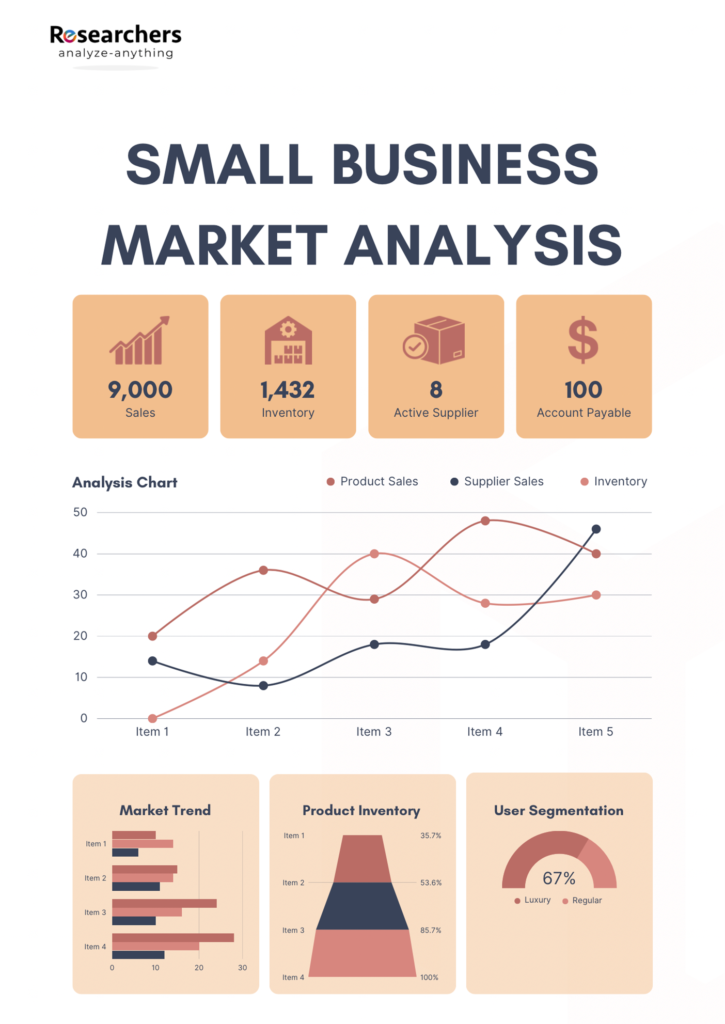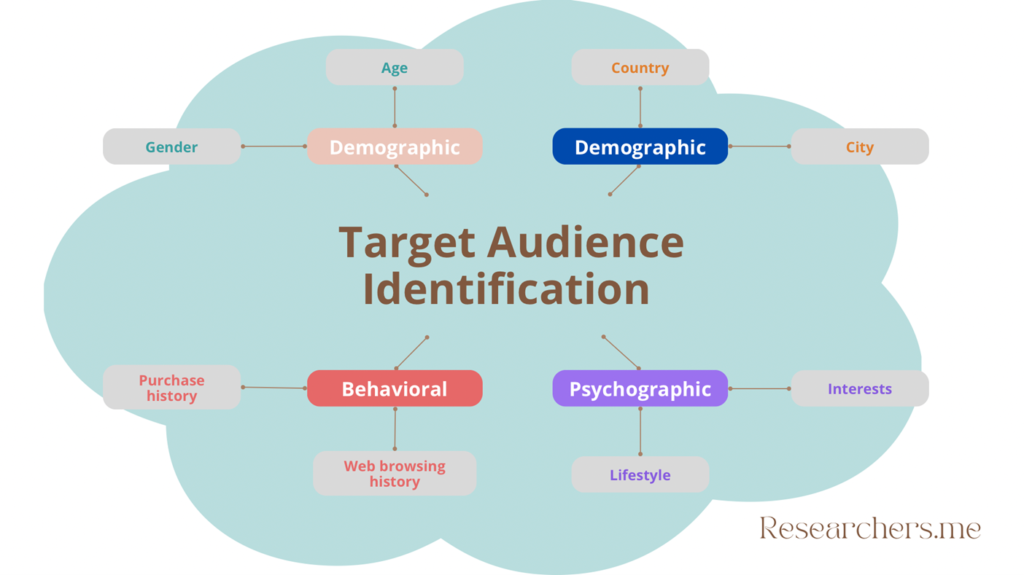Did you know that market research is the secret sauce behind many small business success stories? Understanding your market is not a luxury—it’s a necessity. According to a recent study by Statista, 76% of successful small businesses attribute their achievements to effective market research.
In this guide, we embark on an enlightening journey into the realms of market research for small businesses. We unravel the strategies that propelled these businesses forward, blending facts with actionable steps.
We dissect industry trends and harness the power of customer feedback. Join us as we demystify the art of market research for your small business and pave the way for strategic decisions and sustainable growth.

Understand Your Industry
The first step you need to take in conducting market research tailored to your business is to identify your target audience. Data collected from this process is what you use to conduct your market analysis.
How to Identify Your Target Audience?
Identifying your target audience is a critical first step in any successful marketing strategy. It involves creating a comprehensive profile of the individuals or groups most likely to engage with your products or services. Here’s how you go about this process:
Step 1: Start by clearly defining what you offer. Understand the features, benefits, and unique selling propositions of your product or service.
Step 2: Gather insights into your industry and competitors. Understand the broader market landscape, identify gaps, and recognize successful
Step 3: If your business is already operational, analyze your existing customer base. Identify common characteristics among your most loyal customers. This includes demographics, preferences, and behaviors.
Step 4: Utilize the demographic data you collected to narrow down your target audience. Age, location, income level, education, and occupation are essential factors.
Step 5: Move beyond demographics to psychographics. Understand the values, interests, and lifestyles of your potential customers.
Step 6: Compile the gathered data to create a detailed customer persona. This is a fictional representation of your ideal customer. Give your persona a name, age, and background. Include details like hobbies, challenges, and goals.
Step 7: Dive into the pain points and needs of your target audience. What challenges are they facing, and how can your product or service provide a solution?

Capture the Trends in Your Niche
Now that you have gained insight into your customer base, the next step is to analyze the market trends in your niche. This helps you cater to the pain points of clients better by learning from your competitors. Here’s a detailed breakdown of how to identify trends relevant to your business:
Step 1: Access industry reports published by market research firms, industry associations, or government agencies.
Step 2: Identify key players and market leaders. Understand their strategies, market share, and innovations.
Step 3: Look for data on the overall market size and growth rates. Assess whether the industry is expanding, contracting, or experiencing stable growth.
Step 4: Stay informed about technological regulatory changes within the industry. Innovations shape market trends and create opportunities for businesses that embrace new technologies. Identify how these advancements impact your business operations.

Competitor Analysis
Identifying your competitors helps you define the scope of your business. You have two categories of competitors in every industry:
- Direct, and
- Indirect competitors.
How to Carry Out Competitor Analysis For Direct Competitors?
Direct competitors offer similar products or services to yours and cater to the same target audience. Start by researching businesses in your industry that directly compete with you for market share. Utilize industry directories (both online and offline) to identify businesses operating in your sector. These directories often categorize businesses based on their offerings, making it easier to pinpoint direct competitors.
Explore search engine results, business directories, and industry-specific platforms to identify direct competitors operating in your geographical area. Analyze customer reviews and feedback on your products or services. Often, customers mention alternative solutions they considered or used. This provides valuable clues about businesses directly competing with yours.
Attend industry events and conferences to network and gather insights. Competitors are likely to be present at such events, offering opportunities for direct engagement and understanding of their offerings. Inquire with suppliers or distributors in your industry. They often work with multiple businesses and provide insights into who else is offering similar services.
How to Carry Out Competitor Analysis For Indirect Competitors?
Indirect competitors address the same customer needs or problems but with alternative solutions. Identify these businesses to understand the broader competitive landscape. Carry out customer surveys or interviews that probe into alternative solutions your customers consider. This reveals indirect competitors who provide different solutions but cater to similar needs.
Conduct keyword analysis to understand what terms potential customers use when searching for solutions. Identify businesses ranking for these keywords.
Explore partnerships and affiliations within your industry. Businesses that collaborate or affiliate with each other may indirectly compete for the same customer base.
SWOT Analysis
A SWOT analysis provides a strategic overview of your competitors’ strengths, weaknesses, opportunities, and threats. This helps you identify areas for improvement within your business. Your best bet is to capitalize on competitor weaknesses and build yourself a unique brand.

Developing Actionable Strategies for Your Small Business
After conducting a thorough analysis of competitors and market dynamics, translate these insights into actionable strategies. Visualization through flowcharts or diagrams enhances the communication of these strategies. Here’s how you go about it:
- Identify the key strategic objectives gained from your competitor analysis and market research. These objectives should include market expansion, product innovation, customer retention, or cost optimization.
- Align each strategy with the findings from the SWOT analysis. If the analysis reveals weakness in customer service, focus on enhancing your customer support.
- Create a mind map to visualize the interconnectedness of different strategies and objectives. Place the main objectives at the center and branch out to represent specific strategies related to each objective.
- Prioritize strategies based on their potential impact and feasibility. Identify quick wins you can implement in the short-term and long-term initiatives that require more extensive planning.
- Detail your action plans for each identified strategy. Specify the tasks, responsible parties, timelines, and key performance indicators (KPIs) associated with the execution of each strategy.
Conclusion
Embarking on Market Research for your Small Business is a task you need to carry out. It’s a strategic journey that lays the foundation for informed decisions and sustainable growth. Understand your target audience and stay attuned to industry trends. This positions your business for success in a competitive landscape. Remember, market research is not a one-time affair but a continuous process that evolves with your business. As you navigate your niche market, consider leveraging the expertise and tailored insights offered by researchers.me. Their dedicated services empower small businesses, providing a compass in the vast sea of market dynamics. Take the next step toward strategic growth – explore researchers.me and unlock a world of market research tailored to elevate your small business to new heights.

